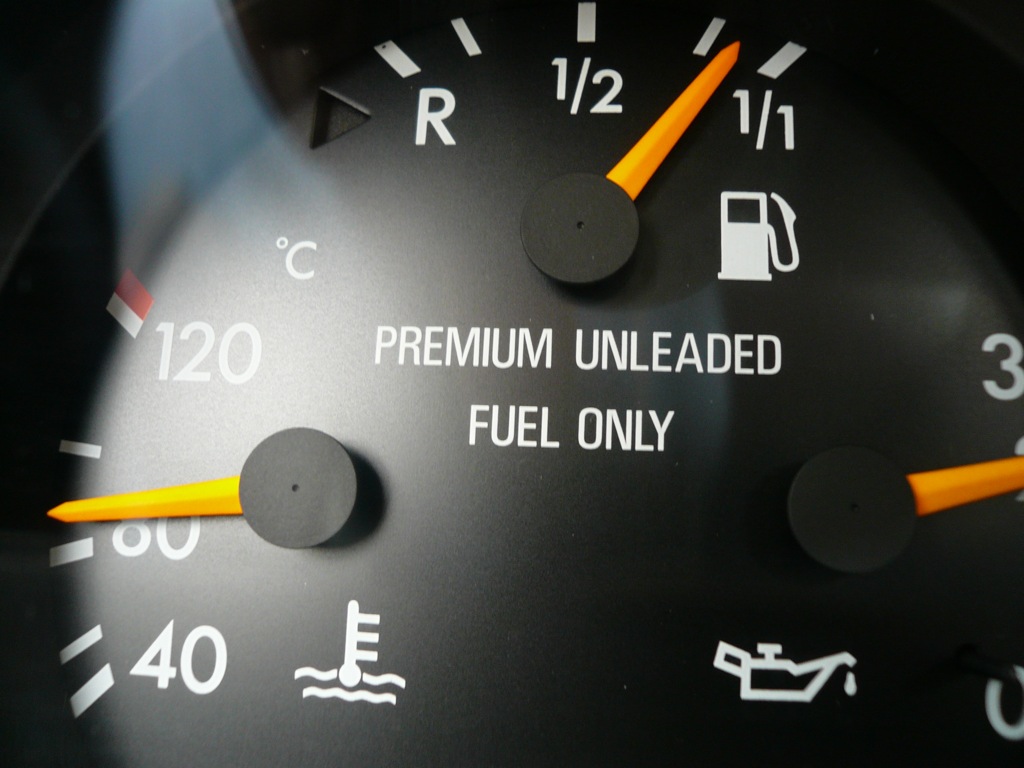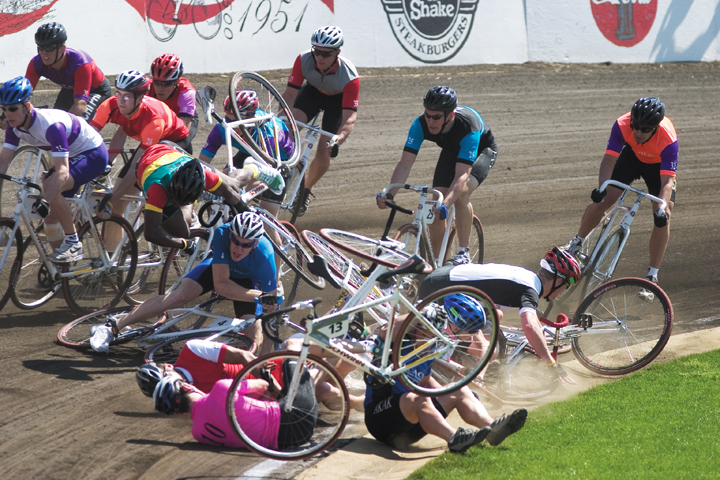
Expo and Packet Pick-up
Because of the size and technical factors involved in this race, the event coordinators make it mandatory to attend an information sesion before being able to pick up your packet. The half hour info session covered a brief outline of the course, transition, and a few of the tricky spots to look out for. It was held along with the expo at the Grand Hyatt in New York City. It really wasn't all that painful, and afterwards I headed to packet pickup, which was organized by number. I was number 4958, out of somewhere near 5000 so I just marched over to the last table.
 |
| Chip scanning station |
 |
| Waiting in line for my packet |
After a few minutes in queue, I approached the table, flashed my USAT card and a piece of ID, and had to sign some USAT waivers, probably promising not to sue if I died in the Hudson.
I then had a wristband attached to my arm which would serve as my identification as a participant for the weekend.
Then, we just had to get our chips scanned and we were let into the Expo.
 |
| The race expo |
 |
| Getting my ankle taped |
The Expo was fairly large, though not as big as I've seen for some marathons. They were selling a lot of event apparel, and also had many different vendors. There were sports/recovery drinks and food available to sample from some smaller companies, as well as Muscle Milk, Clif Bar, and Natural Valley. There were also booths set up by some of the race sponsors selling their merchandise, like Vitamix, which had an Infomercial wannabe showing off the blender, and X-terra. I actually ended up buying a new Vortex 4 sleeveless which I later wore for the race.
I also decided to buy some KT Tape from a booth that they had, and the guys over at KT had a rep offering free taping, so I got my ankle wrapped, to hopefully help some of the nagging that I've been feeling.
After staying for maybe a bit too long, I picked up my goody bag, race t-shirt, and headed outta there.
 |
| So many bikes! |
Bike check-in was set for Saturday, and I showed up pretty late in the night to do mine. It was actually pretty amazing to see so many bikes all in one place. This was probably one of the largest races I've done so far, except for maybe Tremblant 70.3 . In any case, it was nice to be able to walk through and rack my bike in peace and quiet instead of fighting for space and rushing around with many other athletes. The one negative thing I noticed is that the space assigned for each athlete was really quite small. There was barely enough room for my different shoes, and I also had bags with my change of clothing.
 |
| Race morning (yes it's morning, despite the 5am darkness) |
In retrospect, the once thing I would have done differently is that I should have completely set up my transition during bike check-in, instead of coming back at 5am to do this. My wave only started at almost 8am, and I would have liked to have gotten a few extra hours of sleep!
Swim
 |
| Pre-race. I don't know what's going on with my hair. |
The swim was organized a little different than most. Instead of a mass start or one wave per age group, you were divided into waves, and then lined up onto a barge about 10 or 15 athletes at a time. They would release each "mini-wave" every 15 seconds or so. I found it to be unique, and really much more relaxing than trying to avoid being swam over by 200 other people. The best thing about this swim is of course the current! I'm a bad swimmer and I know it, but even when I stopped, I could tell that I was moving fairly quickly by looking at the nearby shoreline. The swim was uneventful. There were no dead fish, dead bodies, condoms, trash, or jellyfish. Really the water is just kinda murky, vaguely salty, and it MOVES. At the end of the swim there are volunteers to literally pull you out. My total swim was 24 minutes. Slow by the race standard, and one I don't expect to beat anytime soon (until the next time I do this race maybe).
T1+Bike
At the end of the swim, volunteers literally pull you out of the water, and then you run a few hundred yards to transition. I had a little trouble unzipping my wetsuit. Being brand new and the first time I'd worn it, I maybe should have practiced beforehand. Anyway I eventually caught the zipper cord and peeled it off halfway while running. Getting my bike shoes on seemed to go a little slower than I'd like, and I was fumbling with deciding if I should wear sunglasses or not before I decided to just shove them in my back pocket since it was quite overcast, and the lenses had gotten all wet from the rain. I ran to Bike-Out, crossed the timing mat, and was about to mount my bike when I realized I had a flat rear tire. Yuuuuup.
Sooooo I ran back over the timing mat back into transition where there was a bike tech helping out. My wife was checking my progress through an app, and since Bike Out/In use the same timing mat, I apparently posted and amazing bike time of 200-something miles an hour. After waiting for the tech to help out another athlete, he got to helping me change my tube, and I was off again. According to the official results, my T1 was 5 minutes, but I'm not sure how accurate it is. it seemed like the process took longer, but maybe I was just anxious.
 |
| Sampled from MarathonFoto.com |
Immediately after mounting you make a steep climb, so its suggest to be in an easy gear. This was definitely a good idea. Since the ground was also wet, I think it would have been easy to spin out and fall otherwise. The course itself was a straight shot up the West Side Highway, with generous rolling hills up through the Bronx before turning around. I found the way out to be more difficult than coming back, and the hills were definitely tiring me out. My goal was to try to make up as much time as I could from the swim and flat tire fiasco, but with my muscles burning I didn't move all that fast. Still, I think I managed to pass a nice amount of people, a few with a number between 25-29 on their calf. Along the way I tried to give as much encouragement as I could to Team in Training athletes as I could when I passed them. There are no aid stations on the bike, so all nutrition has to be with you, which I found to be fine given the overcast weather. Towards the end of my ride, the weather finally started to clear up and get warmer as the sun came out, At that point, I had drank about half my Hammer Perpetuem, and refilled my Aerodrink bottle once. I should point out that I didn't actually DRINK all my water, but rather end up spitting a bunch of my legs to cool them off. Total bike time is posted as 1:39, though again I'm not sure if any of my tube change is included here or not. A 15mph pace is kinda slow for me, but it is what it is at this point. Ill be focusing on my biking a lot leading up to Princeton 70.3, so hopefully it will pay off.
T2 +Run
 |
| Sampled from MarathonFoto.com. And yes, I am flying |
As I mentioned, the Bike-In is the same as Bike-Out, so the bike finished going back down a rather steep hill into transition. I quickly ran my bike to my rack, and ended up just leaning my bike against another, because I couldnt seem to get it in all the way to properly rack it. I got my helmet off, took my watch from the bike, jammed my feet into my Zoots and was off. My T2 was 1:45, quite different from T1. The Run course ran towards and through Central Park. I'd never ran here before so it was really cool to finally have the chance. The interesting part was that since Central Park is such a popular area for runners/cyclists, there were tons of each moving towards the race. Our Half the path was blocked off for the race while rest was open for general use. The park is somewhat hilly, and it definitely was a little tough. There was an aid station every mile or so offering Gatorade, water, and in some stops ice, gels, and I think towels. I kept up a fairly decent pace, since I really wanted to make up some time, and I know the run is my strongest sport of the three. I passed a lot of TNT, as well as a nice amount of people oin my Age Group. 5k split time was 28:15, and total run time was 50 minutes, so I'm pretty happy with a having posted a decent negative split. I thought I might have been running too fast at the beginning, but it's good to know I was able to hold on and push through until the end. Total Race time was 2:59:24, setting a new PR, and finally breaking the 3 hour mark!
Finish+Post Race
The finish line was in Central Park, and nicely marked off to prevent overcrowding or crashing into pedestrians as I've seen in other races. Immediately after crossing I was handed my finisher's medal, and had a ice-cold towel slapped on my shoulder by another TriSports Champion, Anthony. I was also handed a bottle of cold water, and picked up some banana and apples as I got the timing chip removed by volunteers, and was then ushered out into the family reception area. I got some ice wrapped around one of my calves in the medical tent for no real reason other than to speed recovery, and then met up with my wife. I didn't spend much time looking around, but I was surprised that there wasn't more of a finisher's celebration. Again, there might have been and I didn't see it, but I was hoping to buy some sort of race-apparel there instead of having to go online.
As usual, I rewarded myself with some much needed junk food. Pizza, home fries, Birthday-Cake M&M's (Really good!), and more generally crap food throughout the day were on the docket. Gotta love racing ;)
Thanks for reading!























.jpg)










